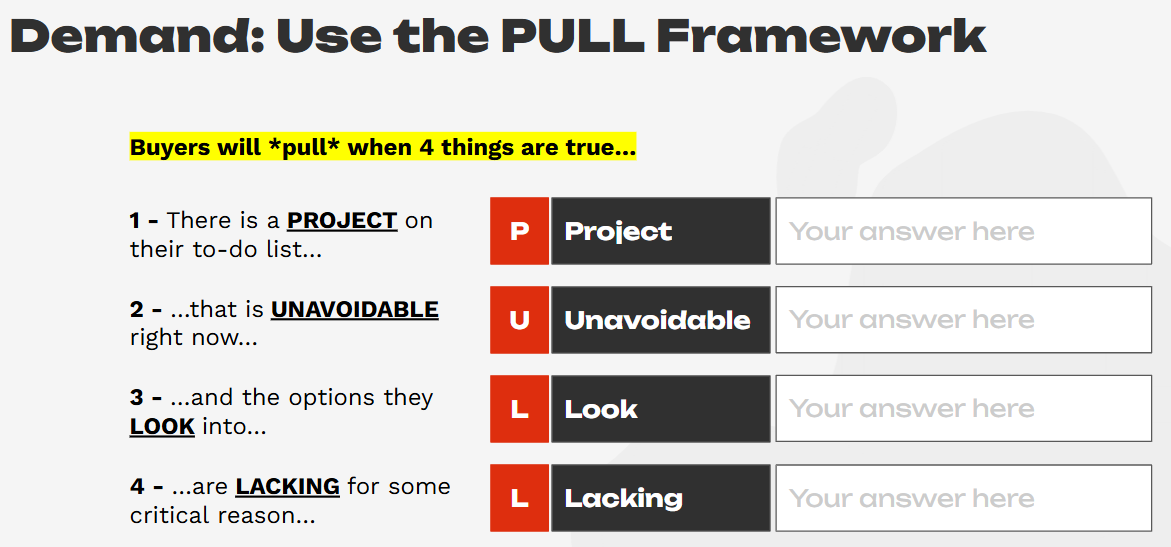PSA - getting close to ‘last call’ for working with me in June/July - learn more HERE.
For some reason, I gave a talk at a news company this week. During the talk I had a realization: The news industry is perhaps the most brutally salient example of what demand is, how it works, and how we delude ourselves into pushing supply that doesn’t fit true demand.
Here’s a brutally common, fictional story.
The Unbiased News Startup
An entrepreneur looks at the news industry and sees a big problem: “Everything out there - from traditional news to social media to podcast-land - is biased and sensationalized.” And as a result, an even bigger problem - we’re all so polarized!
The entrepreneur talks to hundreds of people. Everybody she talks to agrees: It’s a huge problem. So frustrating. Every time they look at the news, they get angry, depressed, confused. They would infinitely prefer something trustworthy, unbiased, that covers “all sides.” Amazing value prop. They happily give her their email addresses to join the waitlist, and can’t wait to share it with everyone they know.
The entrepreneur has, in her mind, validated demand. She does a quick market sizing - hmm, the TAM is “everyone”, huge market - and gets to work designing the product.
She validates her designs with her waitlist, who give glowing and targeted feedback as she iterates, iterates, iterates.
Then comes launch day. She gets coverage in a bunch of news outlets - Noble founder trying to combat America’s polarization problem!
The week after launch day, she watches her usage and subscription dashboards: Hmm. They’re growing, but slowly, and it doesn’t seem like anyone’s really using it a ton, and it doesn’t seem like many people are sharing it with others.
“What’s happening?” the entrepreneur wonders.
“It doesn’t make sense… we should be growing faster, and our subscribers should be using this more. Everyone said they wanted unbiased news. And everyone should want unbiased news. We executed the launch well, and got a ton of impressions in the media.”
She whiteboards a list of potential root causes:
Our messaging isn’t compelling enough
We haven’t evangelized the problem enough
Our signup flow or experience design is wrong
etc.
She force-ranks these and gets to work.
But we all know, that while we’d like her to succeed… *nothing on her list* will save her startup.
The Substrate
I launched a news product like this in business school, using basically the same method and logic, with exactly the same outcome.
You can feel why the entrepreneur above fails. But our words tend to fail us when explaining precisely why this is a trainwreck. We say things like:
Nobody actually wants this product
Even though people say they care about this, they really don’t
Nobody is a “hell yes” for this
Even though this is an objectively big problem, it is not something people act on
Because we don’t have the right words, we make the exact same mistake in our own startups, without realizing it.
Each startup is a bet on demand. This bet is usually implicit, because we’re focused on our products and visions — and on useless concepts like problems, pain points, or value propositions. I’ve found the PULL framework to be the most useful way to make a startup’s demand bet explicit.
With the unbiased news startup, their “PULL” bet might look like this:
Project: Understand what is happening in the world
Unavoidable: I generally feel uninformed
Looking: Existing news sources, social media, podcasts
Lacking: Biased, sensationalized
This seems logical, but we know it is wrong. Why? Not because “it feels wrong”… because it doesn’t represent reality. (For better or worse.)
More precisely, a startup’s “PULL” bet is making this claim:
A person in this situation, with this unavoidable project & unworkable options, *will buy our product by default*. They will not - CAN not - do nothing (or go with an alternative) in this situation.
In other words, PULL is a testable claim about reality, that has nothing to do with our product - which means we can go out there and test it, sans product. If this claim is true, it makes our product inevitable.
How exactly do you test this PULL claim? “Selling”, yes - but ‘sales’ is a bit imprecise, too. Cedric at CommonCog just published a deep-dive HERE that’s helping find better language:
We are looking for an inability to *not* buy. In other words, we don’t want to know “will you buy this?” Instead, we need to know: “Would it be ok if I don’t make it? Would it be possible for you not to buy?”
This is what a PULL bet is: A claim that a person in a specific situation, needing to accomplish something but having bad options is unable to resist buying - assuming, of course, we’ve built something that fits their project and overcomes what makes their alternatives unworkable.
This, I believe, is the substrate. It is the thing that pulls the strings underneath what’s visible, that determines whether a startup succeeds or fails. It is the thing we’ve been trying to describe with phrases like “need-to-have” and “product-market fit.” Yes, execution matters, product matters, people matter - but only after we’ve found real PULL.
See the substrate. Find PULL.
—
PS: I help a few startups at a time find pull and take off. Learn more here and grab 15 mins with me here (hurry - next batch starts June 2); email me at rob@reframeb2b.com if you don’t see any open calendly slots



